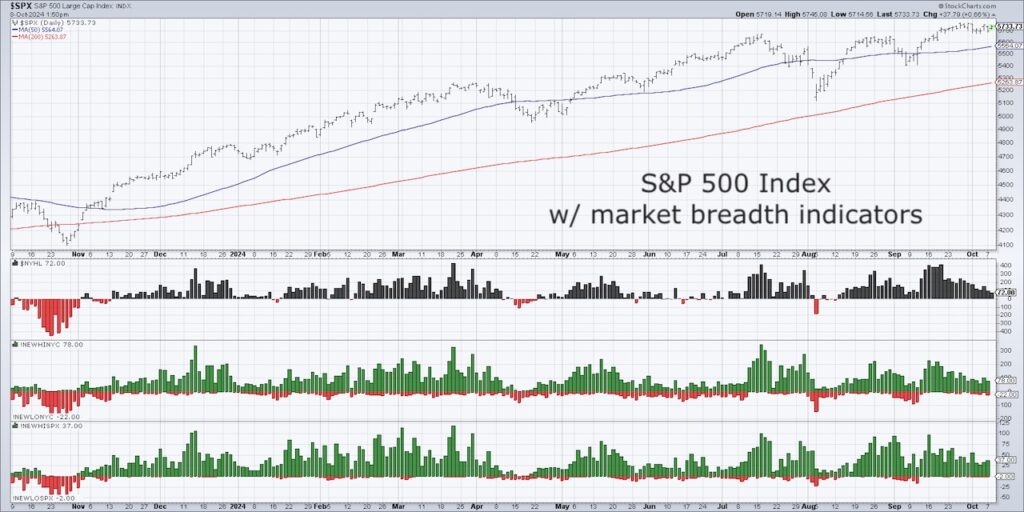Is the market showing signs of bad breadth? Not quite yet, but there are some early warning signals worth paying attention to.
In this video, I walk you through three key market breadth indicators that help us figure out how healthy the market really is and what might be coming next. We’ll break down new 52-week highs and lows, the percentage of stocks above key moving averages, and the bullish percent index to see what they’re telling us right now.
First, we take a look at the new highs and lows to spot any potential cracks as the market climbs. Then, we dig into the percentage of stocks above their 200-day and 50-day moving averages, which could hint at a short-term pullback within a long-term uptrend. Finally, the Bullish Percent Index is one to watch closely—if it drops below 70%, it could be a sign the bull market is running out of steam!
The S&P 500 remains in a primary uptrend, although the upside momentum has languished since the gap higher after the September Fed meeting. Let’s review what these three key market breadth indicators are telling us about potential market conditions in the coming weeks and months. Watch video below for full analysis or see chart further below for quick reference.
– What changes in new 52-week highs and lows should investors watch to confirm a market breadth divergence?
– How can the percentage of stocks above their 200-day and 50-day moving averages indicate a potential pullback?
– Why is the Bullish Percent Index’s 70% threshold crucial for anticipating the end of a bull phase?
What is S&P 500 Market Breadth Saying About Stocks Now?
S&P 500 Index Market Breadth Chart

Twitter: @DKellerCMT
The author may have positions in mentioned securities at the time of publication. Any opinions expressed herein are solely those of the author, and do not in any way represent the views or opinions of any other person or entity.








